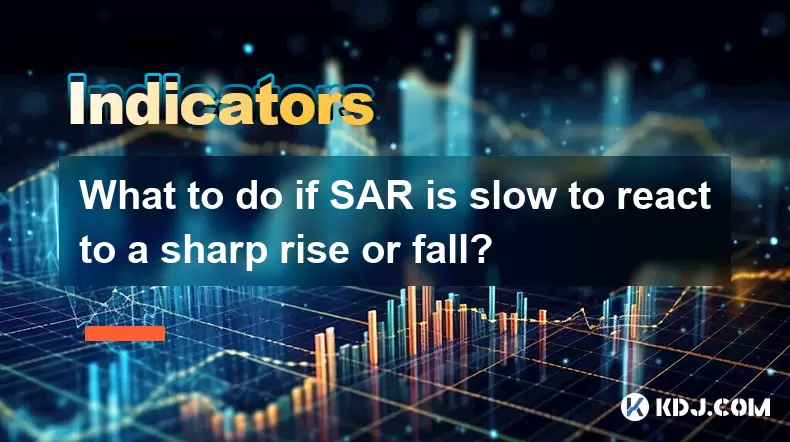-
 Bitcoin
Bitcoin $118800
-0.38% -
 Ethereum
Ethereum $4627
0.69% -
 XRP
XRP $3.120
0.26% -
 Tether USDt
Tether USDt $1.001
0.02% -
 BNB
BNB $844.6
-0.35% -
 Solana
Solana $194.4
-0.44% -
 USDC
USDC $0.9999
0.01% -
 Dogecoin
Dogecoin $0.2300
2.15% -
 TRON
TRON $0.3592
-0.74% -
 Cardano
Cardano $0.9417
2.61% -
 Hyperliquid
Hyperliquid $48.41
6.60% -
 Chainlink
Chainlink $22.41
0.88% -
 Sui
Sui $3.852
2.20% -
 Stellar
Stellar $0.4295
1.39% -
 Bitcoin Cash
Bitcoin Cash $595.2
0.18% -
 Ethena USDe
Ethena USDe $1.001
0.10% -
 Hedera
Hedera $0.2539
0.96% -
 Avalanche
Avalanche $24.51
2.68% -
 Litecoin
Litecoin $121.3
-2.51% -
 Toncoin
Toncoin $3.492
3.17% -
 UNUS SED LEO
UNUS SED LEO $9.674
4.34% -
 Shiba Inu
Shiba Inu $0.00001300
0.07% -
 Uniswap
Uniswap $11.00
0.33% -
 Polkadot
Polkadot $4.008
0.02% -
 Dai
Dai $1.000
0.01% -
 Bitget Token
Bitget Token $4.677
1.61% -
 Cronos
Cronos $0.1557
0.56% -
 Ethena
Ethena $0.7291
2.50% -
 Aave
Aave $311.5
-0.15% -
 Pepe
Pepe $0.00001115
-0.90%
What to do if SAR is slow to react to a sharp rise or fall?
Adjust SAR parameters and combine with MACD, RSI, and Bollinger Bands to manage its slow reaction to sharp crypto market movements effectively.
May 22, 2025 at 04:07 pm

When dealing with the SAR (Stop and Reverse) indicator in the context of cryptocurrency trading, it's crucial to understand its mechanics and limitations. The SAR is a trend-following indicator that helps traders determine potential entry and exit points in the market. However, one of its notable drawbacks is its slow reaction to sharp rises or falls. This article will explore strategies and techniques to manage this issue effectively.
Understanding SAR and Its Limitations
The SAR indicator is designed to provide a trailing stop and reverse signal, which is particularly useful for identifying trend continuations and potential reversals. It calculates the SAR value based on the previous period's high, low, and the current SAR value. The formula inherently includes a lag, which can cause the indicator to be slow in responding to sudden price movements.
This lag can be particularly problematic in the volatile cryptocurrency market, where prices can experience sharp rises or falls within short periods. Traders relying solely on the SAR might miss out on timely entry or exit points, potentially leading to significant losses or missed opportunities.
Adjusting SAR Parameters
One approach to mitigate the slow reaction of SAR is to adjust its parameters. The SAR indicator typically comes with two main parameters: the acceleration factor and the maximum acceleration factor. By tweaking these settings, traders can influence the sensitivity of the indicator to price changes.
- Increase the acceleration factor: A higher acceleration factor will make the SAR more responsive to price movements. However, this also increases the risk of false signals.
- Adjust the maximum acceleration factor: This parameter caps the acceleration factor's growth, helping to control the indicator's sensitivity. Finding the right balance is key to maintaining both responsiveness and reliability.
Combining SAR with Other Indicators
Another effective strategy is to combine the SAR with other technical indicators that are more responsive to sharp price movements. This can help traders make more informed decisions and compensate for the SAR's slow reaction.
- Moving Average Convergence Divergence (MACD): The MACD is known for its ability to identify momentum changes quickly. When used alongside the SAR, it can provide early signals of trend reversals.
- Relative Strength Index (RSI): The RSI can help identify overbought or oversold conditions, which can be useful in confirming or contradicting SAR signals.
- Bollinger Bands: These can provide insights into volatility and potential price breakouts, complementing the SAR's trend-following nature.
Implementing a Multi-Timeframe Analysis
Multi-timeframe analysis can also enhance the effectiveness of the SAR indicator. By examining the SAR on different timeframes, traders can gain a more comprehensive view of market trends and better anticipate sharp price movements.
- Short-term timeframe: Use a shorter timeframe, such as 15-minute or 1-hour charts, to catch early signals of sharp rises or falls.
- Long-term timeframe: Monitor the SAR on longer timeframes, like daily or weekly charts, to understand the broader trend and validate signals from shorter timeframes.
Using Trailing Stops
Implementing trailing stops can help traders manage the risk associated with the SAR's slow reaction. A trailing stop adjusts the stop-loss level as the price moves in favor of the trade, ensuring that profits are locked in while allowing for continued potential gains.
- Set a trailing stop based on price action: Use a percentage or fixed amount to trail the stop-loss level, adjusting it as the price moves.
- Combine with SAR signals: Use the SAR to determine the initial stop-loss level, then let the trailing stop take over to manage the trade dynamically.
Practical Example: Adjusting SAR and Using Additional Indicators
To illustrate these strategies, let's walk through a practical example of how a trader might adjust the SAR and use additional indicators to manage a cryptocurrency trade.
- Identify the trend: Start by analyzing the SAR on a daily chart to identify the overall trend. If the SAR is below the price, it indicates an uptrend; if above, it suggests a downtrend.
- Adjust SAR parameters: Increase the acceleration factor to 0.03 (from the default 0.02) to make the SAR more responsive to price changes.
- Monitor additional indicators: Use the MACD on a 1-hour chart to catch early signals of momentum shifts. Look for the MACD line crossing above or below the signal line as an early indicator of potential trend changes.
- Set a trailing stop: Once a trade is initiated based on the SAR signal, set a trailing stop at 2% below the entry price for long positions or 2% above for short positions. Adjust the trailing stop as the price moves in favor of the trade.
- Confirm with RSI: Use the RSI on a 15-minute chart to confirm overbought or oversold conditions. If the RSI indicates an overbought condition in an uptrend, it may be a signal to tighten the trailing stop or consider exiting the trade.
Frequently Asked Questions
Q: Can the SAR indicator be used effectively in all market conditions?
The SAR indicator is most effective in trending markets. In sideways or choppy markets, the SAR can generate numerous false signals, making it less reliable. Traders should consider the overall market conditions and use additional indicators to validate SAR signals.
Q: How often should the SAR parameters be adjusted?
The frequency of adjusting SAR parameters depends on the trader's strategy and the market's volatility. During periods of high volatility, more frequent adjustments might be necessary to maintain the indicator's responsiveness. However, constant tweaking can lead to over-optimization, so it's essential to find a balance and stick to a strategy that works over time.
Q: What are the risks of using a higher acceleration factor with the SAR?
Using a higher acceleration factor can make the SAR more responsive to price changes, but it also increases the risk of false signals. A higher acceleration factor can cause the SAR to flip more frequently, potentially leading to premature exits from trades or entering trades based on short-lived price movements.
Q: Are there any automated tools that can help manage the SAR's slow reaction?
Yes, there are trading bots and automated trading platforms that can be programmed to adjust the SAR parameters dynamically based on market conditions. These tools can also integrate multiple indicators and implement trailing stops to manage trades more effectively. However, it's crucial to thoroughly test and monitor any automated system to ensure it aligns with the trader's risk tolerance and strategy.
Disclaimer:info@kdj.com
The information provided is not trading advice. kdj.com does not assume any responsibility for any investments made based on the information provided in this article. Cryptocurrencies are highly volatile and it is highly recommended that you invest with caution after thorough research!
If you believe that the content used on this website infringes your copyright, please contact us immediately (info@kdj.com) and we will delete it promptly.
- Kazakhstan's Crypto Leap: Bitcoin ETF and Central Asia's Digital Finance Future
- 2025-08-13 12:45:19
- BlockDAG Presale Blazes Past $371M: Fundraising Frenzy Fuels Crypto Sensation
- 2025-08-13 13:05:21
- Meme Coins: Chasing the 2025 Surge – Which Will Moonshot?
- 2025-08-13 10:25:23
- Bitcoin's Wild Ride: Rally, Pullback, and What's Next
- 2025-08-13 10:25:23
- Bitcoin, Bitmax, and Institutional Demand: A New Era of Crypto Investment
- 2025-08-13 10:45:12
- Solana, ROAM, and Airdrops: What's the Buzz in 2025?
- 2025-08-13 11:35:13
Related knowledge

What does it mean when the +DI and -DI cross frequently in the DMI indicator but the ADX is flattening?
Aug 11,2025 at 03:15am
Understanding the DMI Indicator ComponentsThe Directional Movement Index (DMI) is a technical analysis tool composed of three lines: the +DI (Positive...

What does the sudden appearance of a "dark cloud cover" candlestick pattern during an uptrend indicate?
Aug 13,2025 at 11:35am
Understanding the 'Dark Cloud Cover' Candlestick PatternThe dark cloud cover is a bearish reversal pattern in technical analysis that typically appear...

What does it mean when the moving average, MACD, and RSI all send buy signals simultaneously?
Aug 11,2025 at 01:42pm
Understanding the Convergence of Technical IndicatorsWhen the moving average, MACD, and RSI all generate buy signals at the same time, traders interpr...

What does it mean when both the KDJ indicator and the RSI show overbought signals simultaneously?
Aug 13,2025 at 11:35am
Understanding the KDJ Indicator in Cryptocurrency TradingThe KDJ indicator is a momentum oscillator derived from the Stochastic Oscillator, widely use...

What does it mean when the price is trading above the SAR indicator but the red dots are densely packed?
Aug 09,2025 at 11:49pm
Understanding the SAR Indicator and Its Visual SignalsThe SAR (Parabolic Stop and Reverse) indicator is a technical analysis tool used primarily to de...

What does it mean when the candlestick chart forms a "Morning Star" but trading volume is sluggish?
Aug 12,2025 at 06:28pm
Understanding the Morning Star Candlestick PatternThe Morning Star is a three-candle bullish reversal pattern commonly observed in cryptocurrency pric...

What does it mean when the +DI and -DI cross frequently in the DMI indicator but the ADX is flattening?
Aug 11,2025 at 03:15am
Understanding the DMI Indicator ComponentsThe Directional Movement Index (DMI) is a technical analysis tool composed of three lines: the +DI (Positive...

What does the sudden appearance of a "dark cloud cover" candlestick pattern during an uptrend indicate?
Aug 13,2025 at 11:35am
Understanding the 'Dark Cloud Cover' Candlestick PatternThe dark cloud cover is a bearish reversal pattern in technical analysis that typically appear...

What does it mean when the moving average, MACD, and RSI all send buy signals simultaneously?
Aug 11,2025 at 01:42pm
Understanding the Convergence of Technical IndicatorsWhen the moving average, MACD, and RSI all generate buy signals at the same time, traders interpr...

What does it mean when both the KDJ indicator and the RSI show overbought signals simultaneously?
Aug 13,2025 at 11:35am
Understanding the KDJ Indicator in Cryptocurrency TradingThe KDJ indicator is a momentum oscillator derived from the Stochastic Oscillator, widely use...

What does it mean when the price is trading above the SAR indicator but the red dots are densely packed?
Aug 09,2025 at 11:49pm
Understanding the SAR Indicator and Its Visual SignalsThe SAR (Parabolic Stop and Reverse) indicator is a technical analysis tool used primarily to de...

What does it mean when the candlestick chart forms a "Morning Star" but trading volume is sluggish?
Aug 12,2025 at 06:28pm
Understanding the Morning Star Candlestick PatternThe Morning Star is a three-candle bullish reversal pattern commonly observed in cryptocurrency pric...
See all articles

























































































